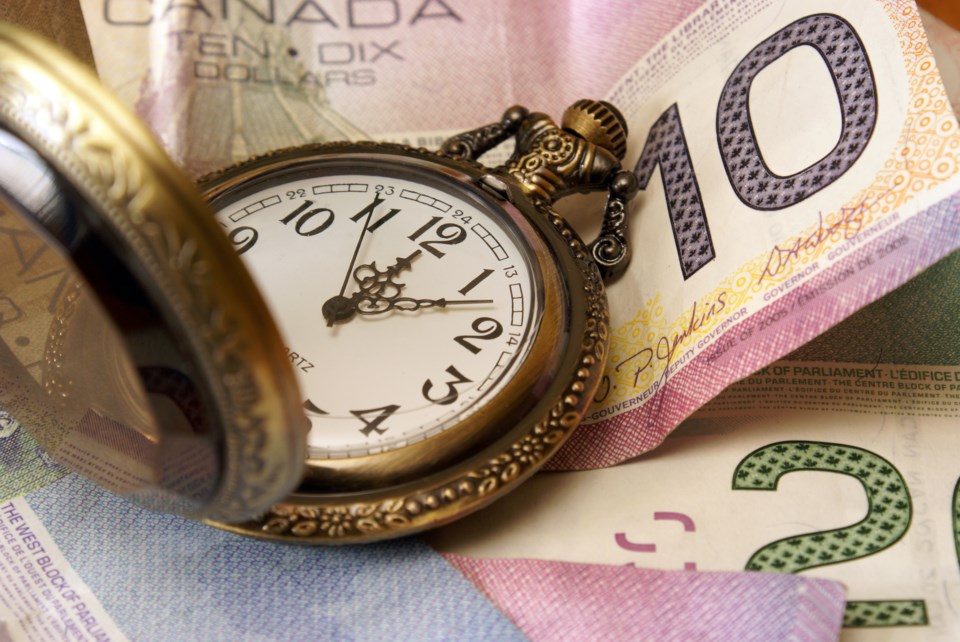British Columbia’s provincial government debt is more than $99.2 billion. Divide that by the five million people in the province and that means we each owe more than $19,000.
And that’s just the provincial debt.
Throw in your share of the federal debt and the number shoots up to more than $48,000 each.
And it’s going up fast. It will probably take you two or three minutes to read this column. The federal debt will go up more than a hundred thousand dollars in that time.
Politicians aren’t eager to tell taxpayers they’re on the hook for all of that borrowing, plus interest, but people need to know.
That’s why the Canadian Taxpayers Federation took the Debt Clock on tour across British Columbia to warn people about the provincial government’s abysmally bad bookkeeping.
The Debt Clock shows the debt going up in real time on giant screens mounted on the sides of a truck. The screens can show either the provincial or federal debt, but this summer, the CTF was taking aim at the provincial slice of the pie.
sa国际传媒’s showed the total provincial debt to be $65.9 billion.
Fast forward to today, and this predicts a total debt of $107.9 billion by the end of this fiscal year.
That debt will balloon to $134.3 billion by the end of the 2025-26 fiscal year.
That means that between the two of them, Premiers David Eby and John Horgan will have racked up more debt in 10 years, than every other government in the past 165 years combined.
They can’t blame all that spending on the pandemic. In 2020-21, sa国际传媒’s government spent a total of . Even after the pandemic is over, the sa国际传媒 government is planning to spend $80.2 billion this fiscal year.
Across the province, from Nanaimo to Salmon Arm to Prince George, sa国际传媒 taxpayers were blown away by the speed that the debt is flying up on the Debt Clock. For families who can barely afford to keep a roof over their head or put food on the table, $107.9 billion is an almost incomprehensibly huge number.
The interest payments on provincial debt this year alone are $3.3 billion. That’s enough money to build two hospitals the size of the , hire 41,000 new , or totally rebate the that the government charged taxpayers in 2022-23.
And the situation isn’t looking any better for the years to come. Despite ending the last year with a $3.6-billion surplus, this year’s budget predicts a $4.2-billion deficit, with multi-billion-dollar deficits for the next three years. That’s like getting a raise at work and still spending too much with your credit card.
It’s not just taxpayers that are sounding the alarm over the rapidly rising debt burden.
Shortly after Eby and Finance Minister Katrine Conroy presented their boondoggle of a budget, credit rating agency downgraded sa国际传媒’s credit rating. It noted that the new budget shows how the provincial “commitment to fiscal discipline and stability has waned.” They also “expect that the province’s fiscal performance will materially deteriorate with the return of operating deficits.”
Remember, interest charges turn every dime borrowed today into a dollar we must pay back down the line. Trust in the provincial government’s ability to make those repayments is falling in the eyes of the bond ratings agencies. That has real consequences. In the early 1990s, Saskatchewan was in a similar situation, forcing NDP premier Roy Romano to of that province’s 110 hospitals.
Unless Eby gets serious about the looming debt crisis, we may find ourselves with tough pills to swallow.
It was at a Greater Vancouver Board of Trade luncheon in 1998 where then finance minister Paul Martin stopped the tick, tock of the federal Debt Clock. Martin remarked that was one of the best arguments for balancing the federal budget.
We can only hope that this summer’s Debt Clock tour will have the same effect on the Eby government.
Carson Binda is the British Columbia director of the Canadian Taxpayers Federation




